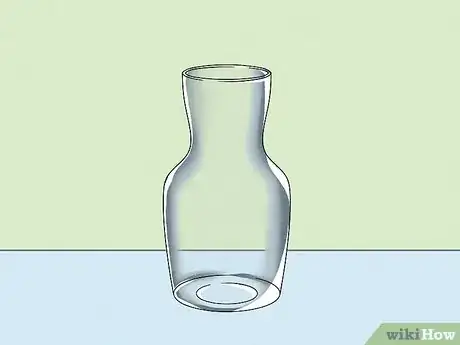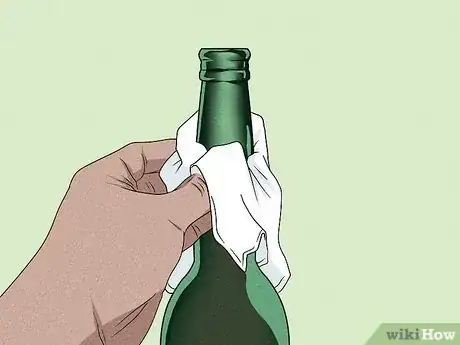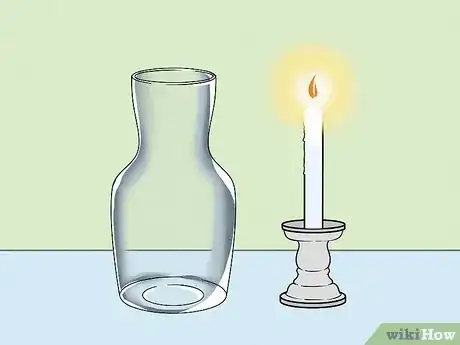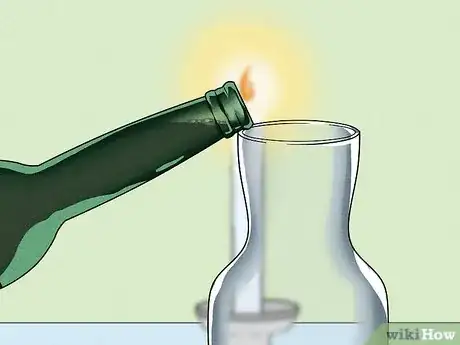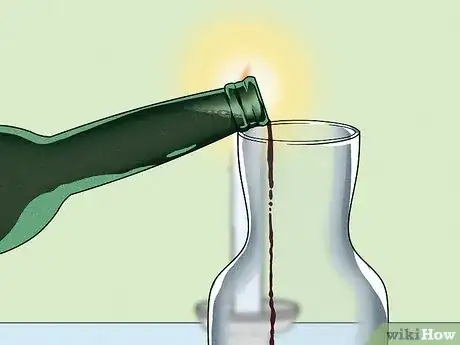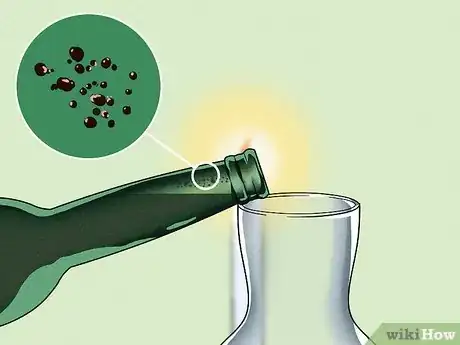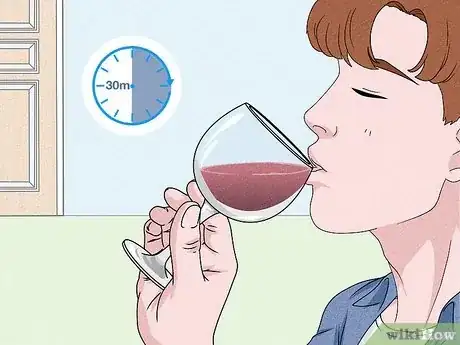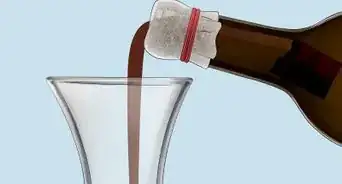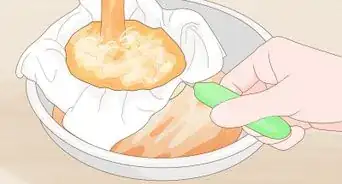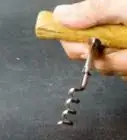This article was co-authored by Samuel Bogue and by wikiHow staff writer, Dan Hickey. Samuel Bogue is a sommelier based in San Francisco, California. He is the Wine Director of the renouned Ne Timeas Restaurant Group and a wine consultant for other top restaurants in the San Francisco Bay area. He gained his Sommelier certification in 2013, and since then has been recognized as a Zagat "30 Under 30" award winner and a Star Chefs Rising Star.
There are 9 references cited in this article, which can be found at the bottom of the page.
This article has been viewed 4,858 times.
Serving fine wine from a decanter looks elegant, but why is it needed? Impressive presentation aside, decanting wine improves its taste and clarity, and you don’t have to be an expert sommelier to do it. We’ve put together a handy guide to decanting wine, including which wines benefit the most and when to decant for the best taste. If you’re ready to enjoy your wine at its best, grab a corkscrew and read on!
Things You Should Know
- Decant wine before serving to separate out sediment and let it breathe.
- Pour wine slowly into a decanter or carafe, keeping an eye on the neck of the bottle so no sediment flows into the container.
- Let most wines decant for about 30 minutes. Decant very old, delicate, or light-bodied wines immediately before serving.
Steps
The Decanting Process
-
1Sit your wine bottle upright 24 hours before serving. This gives any sediment time to settle at the bottom of the bottle, especially if the bottle was stored on its side or it was shaken around recently. When the sediment is collected at the bottom, it’s easier to separate while pouring.[4]
-
2Grab a decanter and wash it while the wine sits. The decanter will be the vessel you pour and serve from, so make sure it’s clean and easy to pour from. You can even use a carafe or a mason jar—anything that allows the wine to breathe will work![5]
- If you’re decanting old and delicate wine, use a decanter with a smaller cradle (the less surface area the wine has, the slower it will aerate).[6]
- Decant young, bold wines in vessels with large cradles to expose more wine to the air.
- Choose a clear decanter so you can see and admire the color of the wine. It doesn’t have to be clear, but it adds a nice touch.
-
3Uncork your bottle and wipe the neck clean. Use a cloth to remove any spots on the bottle neck so that you can see through the glass with no obstructions (this will help you spot sediment as you pour). If there’s foil around the neck, peel it away so the glass is exposed.[7]
- If the cork broke when you opened the bottle and there are small bits in the wine, use a sieve or filtered funnel when you pour the wine into the decanter.
-
4Set a candle or flashlight next to the decanter. The small light will illuminate the neck of your wine bottle while you pour so that you can see sediment creeping into the neck. Candles are traditional, but a small electric light or a flashlight with the light facing upwards will work, too.[8]
-
5Rest the neck of the bottle on the lip of the decanter over the light. Make sure the bottle stays about 6 inches (15 cm) away from your candle or light (otherwise you’ll end up with some warm wine). Keep the bottom of the bottle low to avoid rustling up the sediment.[9]
-
6Pour the wine slowly into the decanter. Maintain a steady and smooth pour by slowly raising the bottom of the bottle. Once the bottle is about half empty, slow your pour even more (this reduces the chance of accidentally dumping sediment into the decanter).[10]
-
7Stop pouring once you see sediment in the neck of the bottle. You’ll probably have about an ounce of wine left in the bottle at this point. Wine sediment can look like chunks, grains, or flakes of solid material. Sometimes, you’ll see the wine turn cloudy instead of seeing particles.[11]
- Discard the remaining bit of wine left in the bottle.
- If you think you can salvage the last of the wine, stand the bottle up again and let the sediment settle before slowly pouring into the decanter again.[12]
-
8Store leftover wine in the decanter to finish within 2 days. Simply put an airtight lid or stopper on the decanter to seal it and stop aeration, preferably within 18 hours. If it’ll take you longer to finish, pour the wine back into the bottle and use a wine bottle vacuum pump to remove the air and seal it.[13]
- Store previously opened wine at a cool temperature to slow down its reaction to oxygen in the air.
References
- ↑ https://cluboenologique.com/story/when-should-i-decant-wine/
- ↑ https://cluboenologique.com/story/when-should-i-decant-wine/
- ↑ https://www.bonappetit.com/story/decanting-wine
- ↑ https://www.themanual.com/food-and-drink/how-to-decant-wine/
- ↑ https://www.themanual.com/food-and-drink/how-to-decant-wine/
- ↑ https://cluboenologique.com/story/when-should-i-decant-wine/
- ↑ https://www.themanual.com/food-and-drink/how-to-decant-wine/
- ↑ https://www.nytimes.com/1981/04/22/garden/how-to-decant-wine-two-simple-procedures.html
- ↑ https://www.nytimes.com/1981/04/22/garden/how-to-decant-wine-two-simple-procedures.html
- ↑ https://www.themanual.com/food-and-drink/how-to-decant-wine/
- ↑ https://www.themanual.com/food-and-drink/how-to-decant-wine/
- ↑ https://www.nytimes.com/1981/04/22/garden/how-to-decant-wine-two-simple-procedures.html
- ↑ https://www.themanual.com/food-and-drink/how-to-decant-wine/
- ↑ https://www.wineandsommelier.com/decanting-tips/#time-to-decant
- ↑ https://nymag.com/restaurants/articles/wine/essentials/decanting.htm
- ↑ https://www.wineandsommelier.com/decanting-tips/#time-to-decant
- ↑ https://www.thekitchn.com/do-you-have-a-wine-145131
- ↑ https://www.thekitchn.com/do-you-have-a-wine-145131
- ↑ https://www.theglobeandmail.com/life/food-and-wine/wine/how-long-before-serving-should-i-decant-my-wines/article37785791/
- ↑ https://cluboenologique.com/story/when-should-i-decant-wine/



